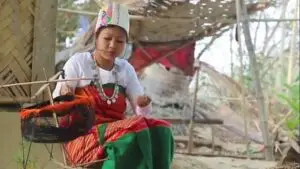We have our reasons for identifying as Tongchangya/Tanchangya. Our intention is not to engage in conflict with any tribe but to share our culture and assert our identity as Tongchangya. Historically, there is little evidence supporting the categorization of Daingnet, Anokya, and Tongchangya, although Daingnet appears to be the earliest name.
The question arises: why do we need to distinguish ourselves from the Chakma? We have a unique identity that differs from theirs. If the similarities between our languages suggest a shared identity, then by that logic, Bengali, Assamese, and Odiya could also be classified under the umbrella of “Sanskrit Language,” which they are not. We acknowledge a historical connection between Tongchangya and Chakma, tracing back to the Sakya lineage. However, we maintain our own distinct identities, including unique clothing, cuisine, and customs.
Similar to the Mon in Lower Burma and the Khmer in Cambodia, who share a common historical root yet have developed separate identities, many tribes in Southeast Asia, including the Shan, Thai, and various groups in Northeast India, also share historical ties. For instance, Assamese has roots in ancient Thai (Tai) but has evolved into an Indo-Aryan language due to historical influences, resulting in a predominantly Hindu population today.
Evidence for our identity as Tongchangya can be traced back to historical accounts. During the reign of Chakma king Dharambux Khan, a Daingnet leader named Phapru led 4,000 Daingnet to present the king with elephants and jewelry, seeking permission to settle in his kingdom. Although the king allowed them to reside there, he did not provide security for the Tongchangya. The Daingnet were recorded as Toing-gangya, named after the Toin River, a tributary of Matamuri, without being classified as Chakma. Over time, the term evolved into Tanchangya or Tongchangya.
Furthermore, during a meeting, Chakma King H.E. Raja Devasish Roy affirmed that Tanchangya is a separate community and not a sub-tribe of Chakma. While the Bangladesh government recognizes the name Tanchangya, its origins can be traced back to British India, as documented in “The Hill Tracts of Chittagong and the Dwellers Therein,” which includes comparative vocabularies of hill dialects from 1869.
We aim to express the identity of Tongchangya without engaging in quarrels or conflicts. As humans, we possess the ability to discern right from wrong. If we understand each other’s challenges and the importance of freedom of expression, there is no reason for conflict. Engaging in disputes over identity undermines our civility. We harbor no animosity towards the Chakma or other tribes; we simply wish to share our beliefs and cultural heritage based on historical records. If our perspective is not accepted, we respect that, but we remain committed to our identity as Tongchangya.




